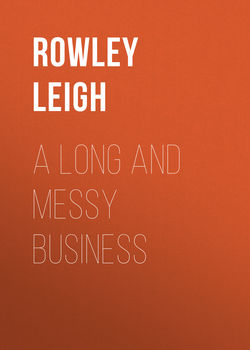Читать книгу A Long and Messy Business - Rowley Leigh - Страница 6
На сайте Литреса книга снята с продажи.
ОглавлениеIntroduction
I have been doing this sort of thing for quite a
while now. When I first started, I tried too hard.
I wanted to show off and I wanted to be
authoritative. If I was writing about Jerusalem
artichokes I would explain that Jerusalem was
a corruption of girasole, a sunflower, that the
French hated them because they had to eat them
instead of potatoes during the war, that they are
a rhizome and not a tuber, then make discreet
reference to farting issues and, finally, I would
give a few recipes. I would have run out of space
in no time.
My first editor, Matthew Fort, whom may God
preserve, gave me a piece of advice from his
days in advertising: ‘tell ’em what you are going
to say, say it, and then tell them what you just
said.’ That sort of helped but it was just a Mad
Men way of describing a school essay or
the form of the classical sonata – exposition,
development, recapitulation. I actually had more
help from Lord Sugar. In those early days I
bashed out my copy – one-finger typing, which
I have not improved upon – on an Amstrad,
a primitive early computer manufactured by
Sugar and in very common use at the time.
Once I discovered the copy and paste buttons,
I was liberated. I realised that I didn’t necessarily
need to decide what I was going to say. I could
just start writing and then move it around later.
That breakthrough led, when I was on form, to
a more discursive style. I just picked up the ball
and ran with it. The actual essay expected was
usually only a five-hundred-word introduction,
and I became adept at starting at point A then
meandering back and appearing as though I
had meant to all along. There were troughs and
peaks but I became well programmed to produce
the weekly ‘piece’, a feat I never achieved at
school or university, and I suspect that my
industry has been a sort of penance for my
former indolence.
However, I was in a bit of a trough by 2010, when
I had been writing for the Financial Times for
five years and writing a weekly column for
fifteen. I was running out of material and too
busy running my restaurant to do much new
or creative cooking. So, when the FT launched a
colour magazine, my heart filled with dread. I
didn’t do pictures. Previously, the FT had given
up trying to produce pictures of food on pink
newsprint paper and my recipes were elegantly
illustrated by little pen drawings by Rebecca
Rose. It suited me: pictures meant a great deal
more work and I became rather proud of being
one of the few food writers who had to rely on
words alone.
On other newspapers I had never cooked the
food in the pictures either. As a working chef,
I never thought I had time. The recipes went out
to a home economist and photographer and they
performed nobly but it was never quite my food.
I decided this time that I couldn’t get away with
that again. I agreed to do the pictures myself,
met a photographer and attempted to negotiate
a rise for the extra work. I didn’t get it.
I had not heard of Andy Sewell. I had put out
some feelers and suggested somebody else
but I liked Andy well enough. It soon became
clear that he had an original turn of mind and
intellectual curiosity. He reads, and can even get
to the end of those interminable essays in the
London Review of Books. We can talk about
opera and classical music. However, he can be
10
